TASTING IN OAKVILLE at Miner Family Winery back in July, it was my French wine importer friend Jack Edward’s comparison of Miner’s 2011 La Diligence marsanne to the Rhône Valley that triggered a flashback to some of the marsanne-based wines I’d tried in the past, especially from the Crozes Hermitage and Saint-Joseph appellations and, when I was lucky enough, from Hermitage. Though they aren’t as widely available in California or the rest of the U.S. as their red counterparts, northern Rhône white wines from producers like Alain Graillot (Crozes-Hermitage) and Domaine Faury (Saint-Joseph) epitomize the particular charms of marsanne-roussanne blends, while the great Jean-Louis Chave’s description-defying Hermitage blanc exists in another universe altogether. Unlike white Hermitage these days, the price of which would inflict feelings of inadequacy on even the most aggressive Napa Valley business manager, Graillot’s and Faury’s bottlings represent some of France’s great white wine values, as do those of their equally accomplished fellow producers.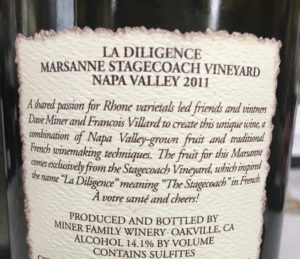
I remember a couple of road trips to Napa and Sonoma while in college in the late 80s. The white wines on offer in winery tasting rooms (free of charge, no ID checks, lots of pretzels and local mustard) were as much about the two “blancs”—chenin and fumé—as they were about chardonnay. But before I began to develop a sense of what California white wine was supposed to taste like, I was serving and drinking blancs from Saint-Joseph and Crozes-Hermitage (and even Chave’s Hermitage) in Paris in 1991 and ’92, working as a garçon and barman at the iconic first arrondissment restaurant, Willi’s Wine Bar. It was a formative period in my wine career. As much as anything else I recall drinking back then, the distinctive aromas and flavors of northern Rhône white wines etched an indelible impression on my rookie palate. When, years later, I tasted the ’11 La Diligence marsanne at a San Francisco trade show, I experienced a rush of memory to that time.
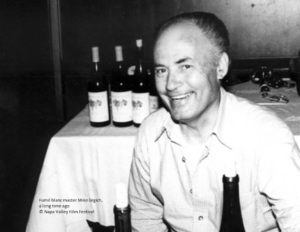 Not long after getting together in Oakville with Dave Miner and Jack for our conversation about La Diligence, I rang up my good friend and former employer, Tim Johnston, to gain some perspective on the Rhône wines I got to try during my expat days in Paris. A longtime Parisian restaurateur and wine expert, Tim had already been living in the city for two decades when I arrived in the spring of 1991. Back then, the Scottish transplant ran Willi’s Wine Bar and his own, smaller place around the corner called Juveniles. On the Monday afternoon I walked into Willi’s with my college busboy resumé and an earnest desire to put a temporary work permit to good use, the young English woman behind the bar (the UK wine merchant Laura Mason, a friend to this day) informed me that she’d just given her notice and scribbled down Tim’s office number. However unlikely, I had a job a few days later waiting tables and tending bar in the French capital’s most Rhône-centric restaurant.
Not long after getting together in Oakville with Dave Miner and Jack for our conversation about La Diligence, I rang up my good friend and former employer, Tim Johnston, to gain some perspective on the Rhône wines I got to try during my expat days in Paris. A longtime Parisian restaurateur and wine expert, Tim had already been living in the city for two decades when I arrived in the spring of 1991. Back then, the Scottish transplant ran Willi’s Wine Bar and his own, smaller place around the corner called Juveniles. On the Monday afternoon I walked into Willi’s with my college busboy resumé and an earnest desire to put a temporary work permit to good use, the young English woman behind the bar (the UK wine merchant Laura Mason, a friend to this day) informed me that she’d just given her notice and scribbled down Tim’s office number. However unlikely, I had a job a few days later waiting tables and tending bar in the French capital’s most Rhône-centric restaurant.
 As I would soon find out, it was stressful and unglamorous work—even on the best days—serving lunches and dinners prepared by a hot-tempered, mostly humorless French chef to demanding, haut bourgeois Parisians. Stretching the definition, it was also a lot of fun. (Tim’s very first instructions to me for mopping the well-worn, wood floors each morning before lunch service: “You need to do this with great vigor and enthusiasm, and in no time flat!”) I kept the low-paying toil in perspective: to a wine-curious college grad, the flow of Rhône and other French wines and Chef Philippe’s often-delicious staff meals were better than free beer and dorm pizza to a freshman.
As I would soon find out, it was stressful and unglamorous work—even on the best days—serving lunches and dinners prepared by a hot-tempered, mostly humorless French chef to demanding, haut bourgeois Parisians. Stretching the definition, it was also a lot of fun. (Tim’s very first instructions to me for mopping the well-worn, wood floors each morning before lunch service: “You need to do this with great vigor and enthusiasm, and in no time flat!”) I kept the low-paying toil in perspective: to a wine-curious college grad, the flow of Rhône and other French wines and Chef Philippe’s often-delicious staff meals were better than free beer and dorm pizza to a freshman.
Tim was familiar with Miner Family Winery, though not La Diligence as its second label. I think his interest was piqued by my description of the 2011 marsanne in an earlier email as a wine that took me back to the time he signed my paychecks. I caught him on the phone just before the dinner service at Juveniles. I pictured him sitting near the kitchen at prime table #14—as opposed to standing over it. Tim has slowed down his pace in recent years, unsurprising for a guy who has had to deal with those same Parisian diners for most of his career. In the background I heard his daughter, Margaux, firing questions at him over the din. The 29 year-old was four when I worked for her father, and today she and her chef husband, Romain Roudeau, energetically run the show full-time at the compact but very popular, wine-centric restaurant.
“Northern Rhône whites have changed much m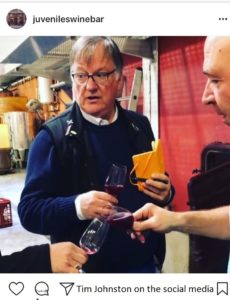 ore than reds over the last 30 years,” said my old boss when I asked him to bring me up to speed on the styles of Rhône wines in 2018. “And obviously, the techniques, looking at both in the vineyard and in the winery, have improved incredibly in all sorts of things.” Tim went on to add, however, that technical advances in the 21st century didn’t always translate to better wines.
ore than reds over the last 30 years,” said my old boss when I asked him to bring me up to speed on the styles of Rhône wines in 2018. “And obviously, the techniques, looking at both in the vineyard and in the winery, have improved incredibly in all sorts of things.” Tim went on to add, however, that technical advances in the 21st century didn’t always translate to better wines.
He referenced a 2017 Decanter magazine article by Rhône expert John Livingstone-Learmonth that we’d both read. It was on Jean-Louis Chave, the leading producer of Hermitage. In it the winemaker asked a rhetorical question of his interviewer: “Why would anyone want to drink what is a grand vin and find it skinny, not rich?” The point being that, per Tim’s own observation, marsanne-based wines from the northern Rhône were, and are, changing, in some cases not necessarily for the better. The region’s full-bodied, exotic style of white wine (to which I had miraculously graduated after a college drinking career defined by Schaefer and Miller High Life) was, by both his and Decanter’s estimation, developing a more figure-conscious profile.
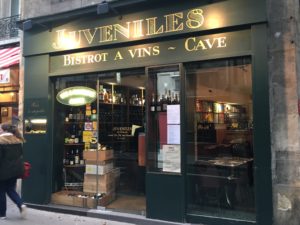 “It’s interesting to see from that interview with Chave,” he continued. “I would agree with that. There are people making ordinary, sort of squeaky clean and quite nice, but not very interesting white wines. And obviously the people like Gonon and Gripa and those sort of people are making absolutely fantastic wines.”
“It’s interesting to see from that interview with Chave,” he continued. “I would agree with that. There are people making ordinary, sort of squeaky clean and quite nice, but not very interesting white wines. And obviously the people like Gonon and Gripa and those sort of people are making absolutely fantastic wines.”
I shared that his old friend Alain Graillot’s Crozes-Hermitage blanc was a wine I remembered from way back that was still in my drinking rotation. Graillot has a San Francisco importer, so I’ve been able to find it in the Bay Area over the last two decades and keep up with this particular Rhône white. “We always had Alain’s wines. He started in 1985, though I’m not sure there was white that year,” Tim said before branching off to other producers. “We used to do a little fizzy Saint-Péray from Jean-François Chaboud and Pierre Darona, as well as the single varietals from Chaboud—not a great success. We did Saint Joseph white from Coursodon, not nearly as good as it is today! Above all, do not forget Jean-Louis Grippat, who made wonderful Hermitage and Saint-Joseph blanc. I worked harvest there in 1985. They were really fantastic wines!”
Some of these names were familiar, while others were lost on me. I’ve bought, sold, and drunk a cargo hold of wines in the intervening years, so I suppose the semi-obscure white Rhônes have gotten crowded out. Coursodon and Grippat were, however, a pair of producers whose wines I could still taste in my head, and which I could relate to Graillot’s Crozes-Hermitage and the Faury Saint-Joseph, a label that Kermit Lynch has imported and carried in his Berkeley shop forever. Admittedly, the memories are 25 years old, but the power of suggestion is strong. When Tim described his past and present favorites to me in La Diligence-esque terms of “the round, the honeyed, the peaches, the rich with not too much acidity,” it reminded me that Dave and Jack’s Napa Valley marsanne was a wine that bridged the gap from then to now.
If “skinny” wines are part of the future of northern Rhône white winemaking, the Miner folks are having none of it back in Oakville. Miner Family Winery’s signature Rhône-style wine, its viognier, may not be as exotically floral as old-school Condrieu, but it has a lot more in common with the Rhône Valley than many other California versions I’ve tried over the years. In the meantime, for the standout white wine of Miner’s Rhône lineup (in addition to the dwindling ’11 La Diligence in the winery’s cellar), I point to that erstwhile second label’s descendant bottling, The Iliad. To fashion this dry, rich wine when they started producing it in 2012, Dave and his winemaker, Gary Brookman, went with a traditional northern Rhône blend of marsanne and roussanne, along with a few percent of viognier. Except for the mix of grapes, The Iliad picks up where their 100% marsanne ended its La Diligence run. Stone fruity, herbal, and a bit creamy, it’s what I’d describe as an un-skinny Napa Valley wine.
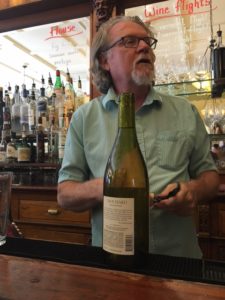
 During a lunch last September at The Girl & The Fig in Sonoma, where the entire list is comprised of Rhône variety wines from California, along with France and several other countries, the glass of 2013 Iliad I drank allowed me to close my eyes and imagine a Saint-Joseph or even a baby Hermitage sliding past my gums. “To like white Hermitage,” Jean-Louis Chave said in the Decanter article, “you have to be a gastronome. You can’t disconnect it from food.” With the local cheeses or Croques Monsieur or whatever I had to eat that afternoon while chatting baseball with the restaurant’s colorful bartender, Texas native John Wilson (his Astros would go on to defeat the Dodgers in the World Series just a few weeks later; I rather wish it had been the other way around), The Iliad was a hedonist’s highlight to an afternoon on the Sonoma Plaza. If I don’t get to it first, I expect the next bottle someone opens for me will accomplish much the same thing.
During a lunch last September at The Girl & The Fig in Sonoma, where the entire list is comprised of Rhône variety wines from California, along with France and several other countries, the glass of 2013 Iliad I drank allowed me to close my eyes and imagine a Saint-Joseph or even a baby Hermitage sliding past my gums. “To like white Hermitage,” Jean-Louis Chave said in the Decanter article, “you have to be a gastronome. You can’t disconnect it from food.” With the local cheeses or Croques Monsieur or whatever I had to eat that afternoon while chatting baseball with the restaurant’s colorful bartender, Texas native John Wilson (his Astros would go on to defeat the Dodgers in the World Series just a few weeks later; I rather wish it had been the other way around), The Iliad was a hedonist’s highlight to an afternoon on the Sonoma Plaza. If I don’t get to it first, I expect the next bottle someone opens for me will accomplish much the same thing.
• • • • •
I returned recently to the Miner website and its “Rhône style” page, where I noted the price of the current 2014 Iliad bottling is $30. For the amount of richness, balance, and complexity this wine delivers, it’s a bargain—at least compared to any number of chardonnays made in California that cost twice as much and uniformly taste half as good. The last bottles of 2011 La Diligence are offered on the website at a library premium of $38, still a very fair figure compared to those cookie-cutter chardonnays.
A quick perusal of Wine-Searcher.com confirmed that, like The Iliad, the two northern Rhône whites I’ve discussed, Domaine Faury’s Saint-Joseph and Alain Graillot’s Crozes-Hermitage, sell for $30 or very close to it. The prices of other wines from the same appellations can creep up from there, but most tend to list closer to $25—again, a pretty good deal for my money. The fractional amount of euros Tim and Margaux pay directly to their Rhône suppliers to carry some of these same wines at Juveniles frankly leaves me green with envy. “White Crozes-Hermitage is a really good value,” Tim observed near the end of our July call. “Whichever way you look at it, it’s good value white wine because even from some of the people who don’t make such great versions of it, it’s cheaper than chips.”
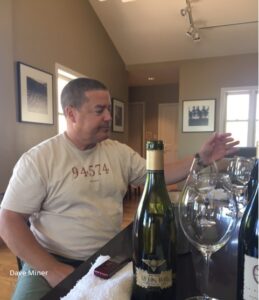 There’s a continuity from Graillot and Faury and their Rhône Valley confrères to what Dave Miner and company did previously with La Diligence and are doing today with The Iliad: namely showing the level of quality marsanne is capable of achieving. The latter Miner wine is based on the tiny planting of Stagecoach Vineyard marsanne, which comprises about two-thirds of the cuvée and contributes a floral, honeyed roundness to roussanne’s tension and minerality. As a vine planted in the expansive, Gallo-owned vineyard and in California, marsanne is almost a viticultural aberration; I mentioned in part one that it covers an infinitesimal amount of land in this state, about 1/900th of chardonnay’s current acreage. It takes up similarly minute space among the 600 acres of cabernet sauvignon planted in Stagecoach. Needless to say, the folks at Gallo didn’t purchase Napa Valley’s largest contiguous vineyard last year for its white Rhône grape potential! Artisan growers merely dabble with the variety here, compared to their counterparts in the northern Rhône, where, as Tim reminded me, “chardonnay is certainly not being allowed into places or slipping into places where marsanne or viognier grow, because those grape varieties are just as famous and just as fantastic as chardonnay.”
There’s a continuity from Graillot and Faury and their Rhône Valley confrères to what Dave Miner and company did previously with La Diligence and are doing today with The Iliad: namely showing the level of quality marsanne is capable of achieving. The latter Miner wine is based on the tiny planting of Stagecoach Vineyard marsanne, which comprises about two-thirds of the cuvée and contributes a floral, honeyed roundness to roussanne’s tension and minerality. As a vine planted in the expansive, Gallo-owned vineyard and in California, marsanne is almost a viticultural aberration; I mentioned in part one that it covers an infinitesimal amount of land in this state, about 1/900th of chardonnay’s current acreage. It takes up similarly minute space among the 600 acres of cabernet sauvignon planted in Stagecoach. Needless to say, the folks at Gallo didn’t purchase Napa Valley’s largest contiguous vineyard last year for its white Rhône grape potential! Artisan growers merely dabble with the variety here, compared to their counterparts in the northern Rhône, where, as Tim reminded me, “chardonnay is certainly not being allowed into places or slipping into places where marsanne or viognier grow, because those grape varieties are just as famous and just as fantastic as chardonnay.”
It was an enlightening, long-distance conversation with my old friend about some of the wines I’ve been enjoying since I was a 23 year-old garçon, traditional renditions of marsanne and viognier that are the ingredients for heady, complex, and outstanding white wines from a region made famous by its majestic syrah. “I mean, you know, they’re not going to get rid of it or anything,” Tim told me before I let him get back to helping Margaux with their dinner customers at Juveniles. “Marsanne’s very much a great grape variety.”
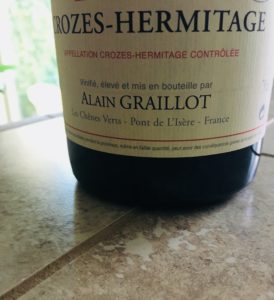
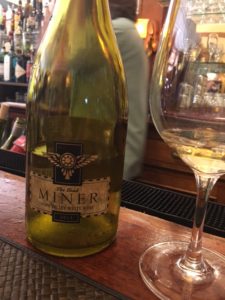

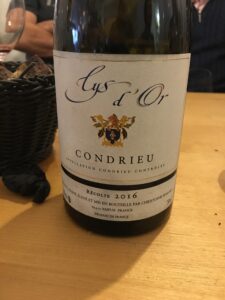
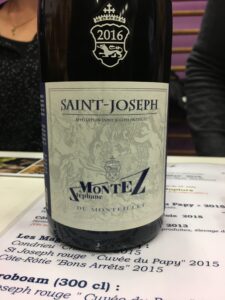
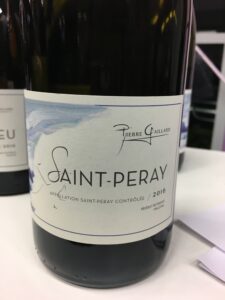
Ouch, you misquoted me……… I worked at Grippat in 1985, when we had a lovely harvest. However, Grippat now belongs to the Guigals and I was referring to the Gripa family of Mauves………. Too much Marsanne, a little Roussanne and a good splash of Condrieu (THE Viognier !) all make us Rhone lovers REALLY HAPPY. You must not forget to also mention the Graillot’s White Crozes is all bottled under screw caps and has been for years. Helps to retain the freshness, so easily lost with corks !!!
Too much marsanne & co is just enough! Edits are done. Thanks, TJ!